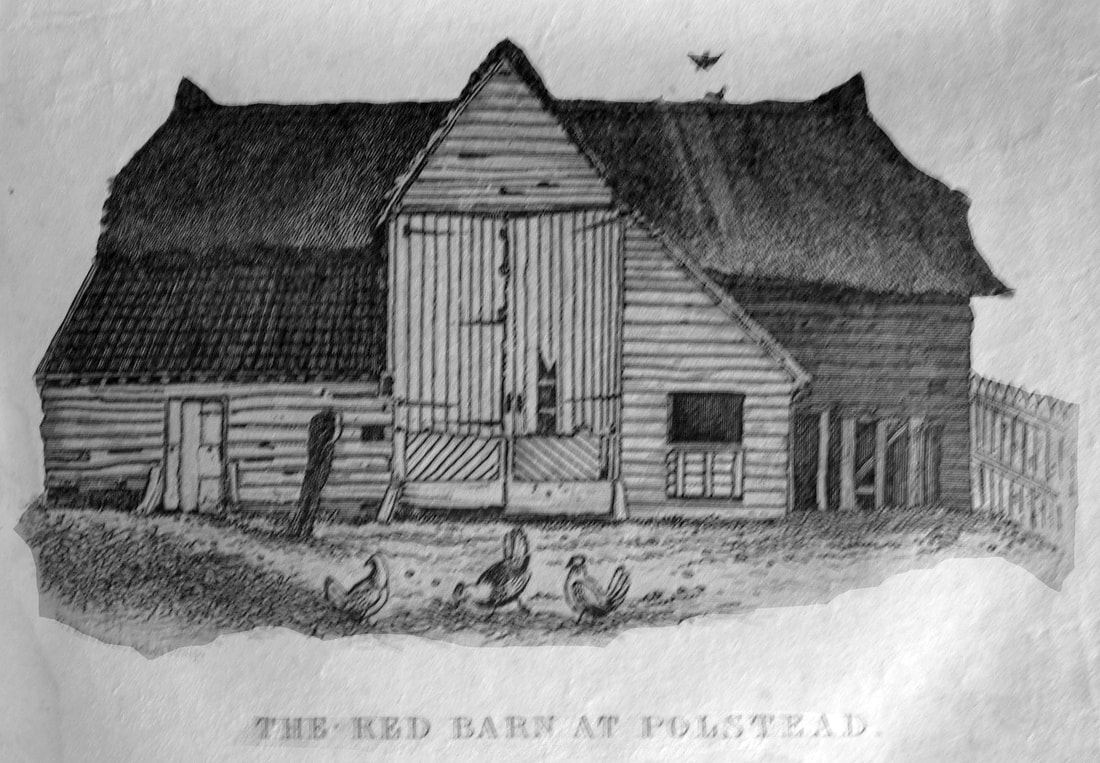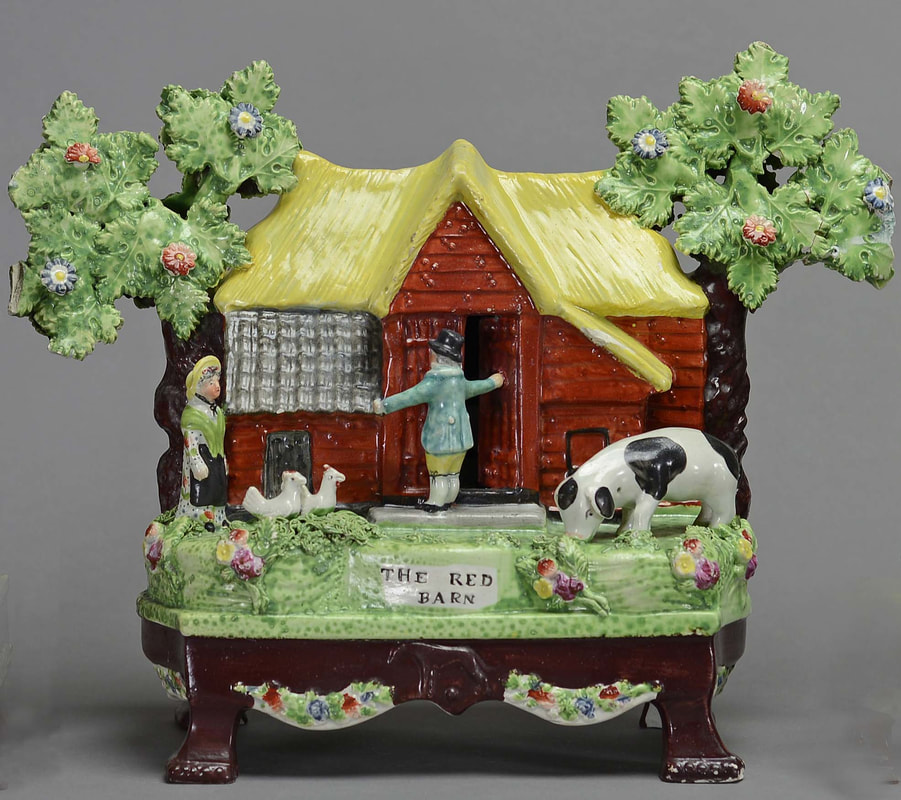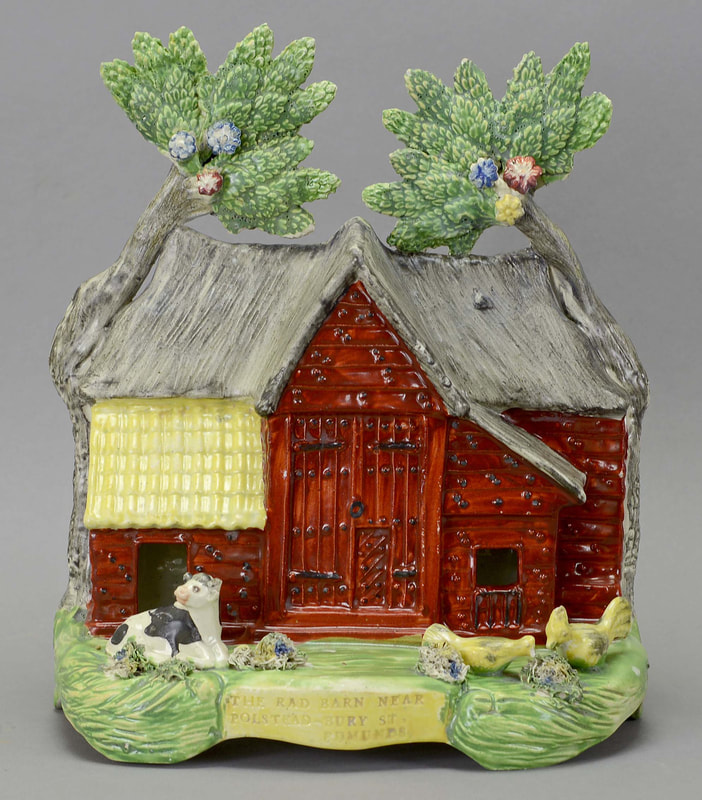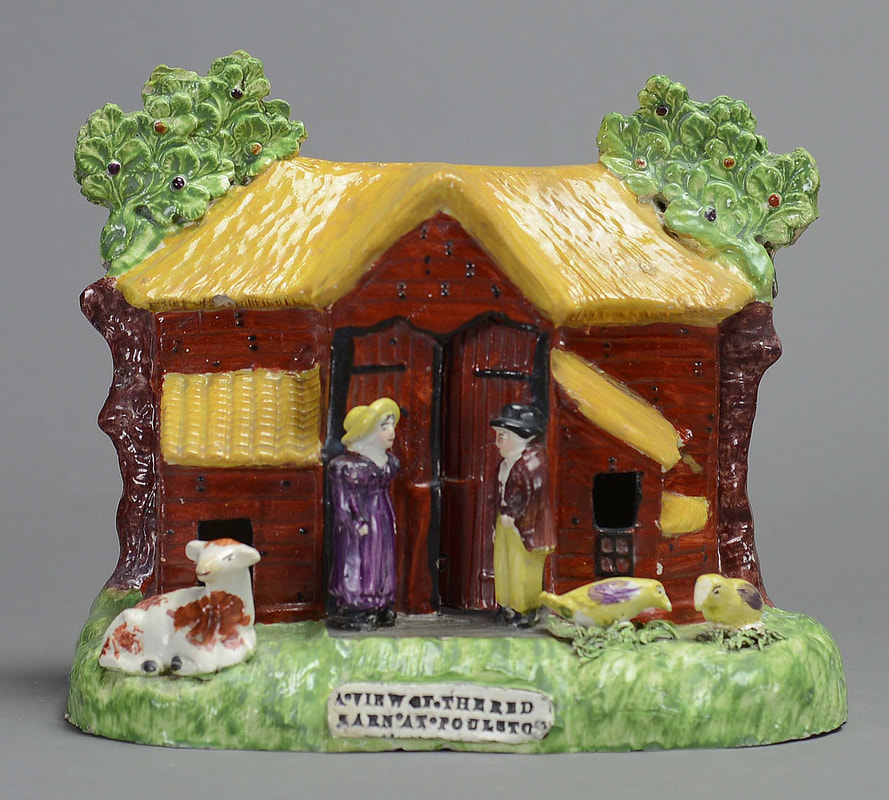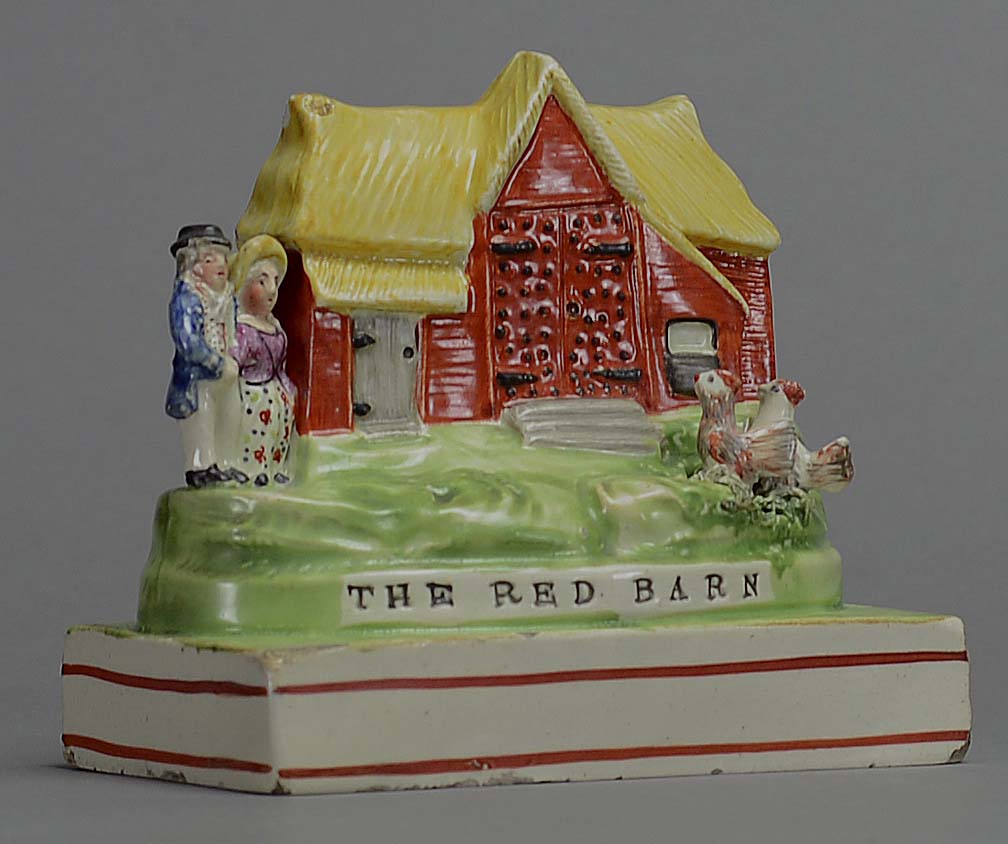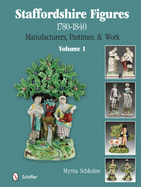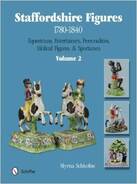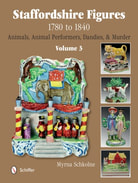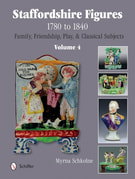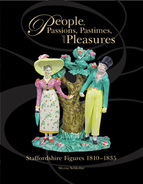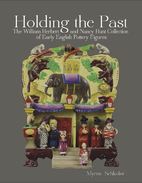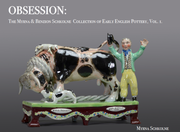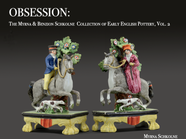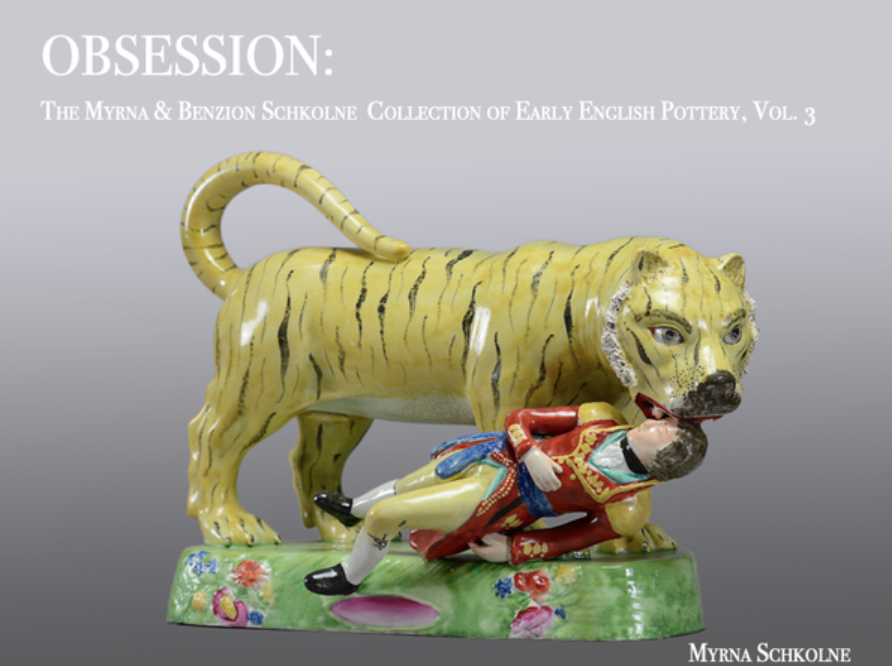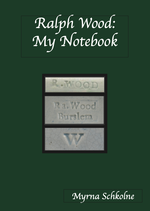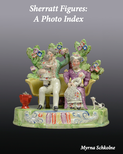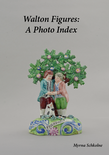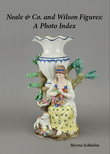The Red Barn murder--so called because the victim was buried beneath the floor of the Red Barn-- is an eternally perplexing "who dunnit." In 1828, William Corder was tried and hanged for murdering Maria Marten, but fascination with his crime did not die on the gallows with him. The murder, replete with unanswered questions and salacious details, was very much in the news in its day, and Staffordshire models of the Red Barn were potted as chilling souvenirs of Corder's deed. Examples are uncommon, supporting my belief that most early nineteenth century figures were made for respectable middle-class households in which the Red Barn murder was a distasteful subject.
Interest in the Red Barn murder persists to this day, and Staffordshire Red Barns are among the most desirable of early pottery figures. All were made around 1828. The most well-known model was made by the "Sherratt" pot bank, and one is below.
The Red Barn below seems to have come from the very same molds, yet it was made by a quite different pot bank. This model can be attributed to the "Patriotic Group" pot bank, and, unlike the "Sherratt" barn, it was made without figures of Corder and Marten.
The third Red Barn is made from different molds than were used for the previous two Red Barn models. It is known from only three examples. Two of these are in Dallas collections that the Staffordshire Figure Association will visit.
And last but certainly not least is the tiniest of Red Barns, known from only this example. This little gem was made by the "Sherratt" pot bank. It really is small, with a foot print around the size of a small iPhone. Small does not mean inexpensive when it comes to rarities, and I tease the owner that on a square foot basis this is the most expensive piece of English property ever.
